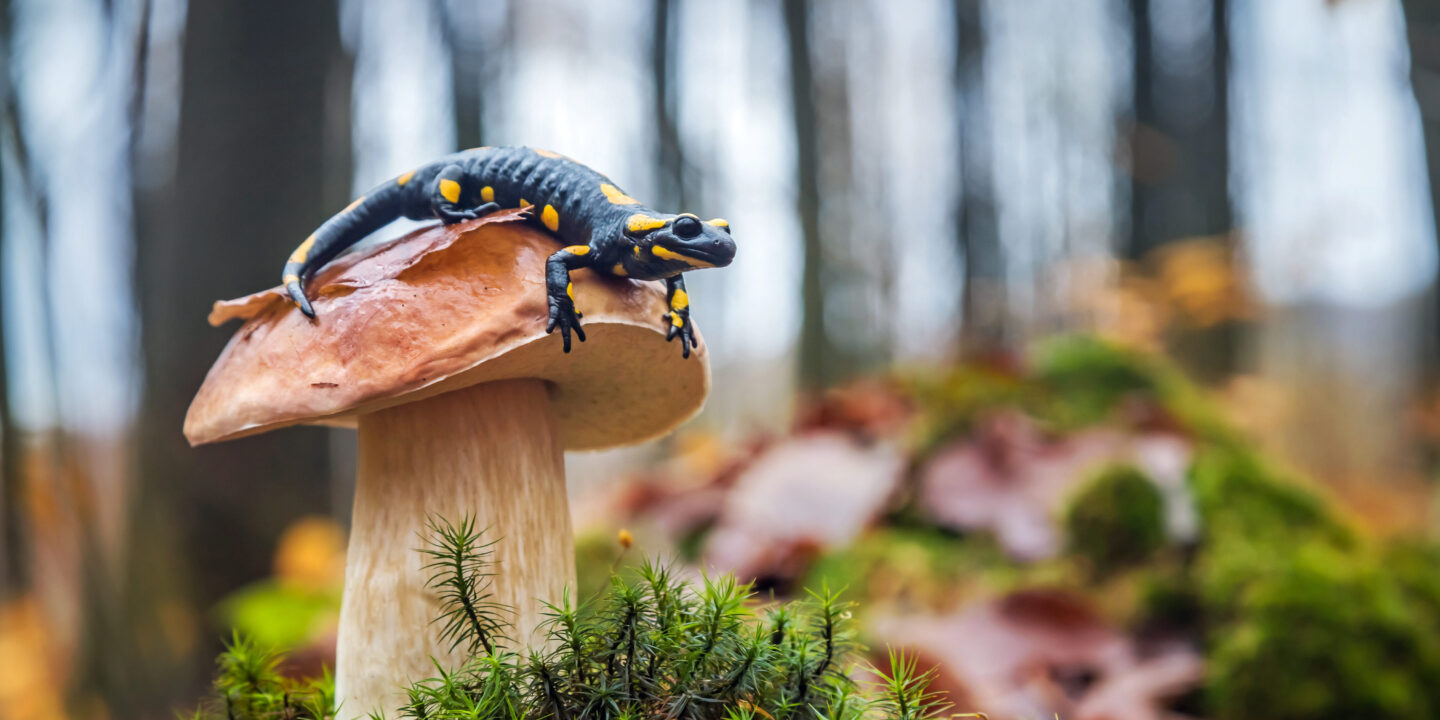
Digital sustainability: it pays to be a leader, not a laggard
Companies that excel in both digital and sustainable transformation attract a stock market premium, according to research. So, how do you tap into that value? ...

by Adrian Dellecker Published 3 October 2023 in Sustainability • 8 min read
Nature and biodiversity conservation have long been overlooked by business and society, with an estimated investment shortfall of $711bn annually – more than the annual GDP of Poland.
This has led to an alarming loss of biodiversity, which is not only terrible for the planet but bad for businesses. With nature, and the services it provides, directly contributing to more than half of the world’s GDP, this loss of biodiversity could undermine our economy and jeopardize the access to clean air and water on which we depend for our food and our health.
Recognizing this, world leaders agreed in December 2022 to the Global Biodiversity Framework (GBF), the natural world equivalent of the Paris 2015 Agreement on climate change, which sets an overarching goal to reverse biodiversity loss by 2030.
Among other things, the GBF pledges to close the conservation funding gap and mobilize at least $200bn of financing per year by 2030. Until now, 80% of the funding going to nature conservation comes from public sources. To reach the targets set out in the GBF, it will be necessary to add funding from the private sector and market-based instruments (MBI) for biodiversity.
This presents an opportunity for forward-looking companies and business leaders to get ahead of the curve and shape an investment environment that values nature and people as well as the bottom line.
One potential tool mentioned in Target 19 of the GBF is voluntary biodiversity credits (VBC), which aim to assign an economic value to efforts to preserve or restore ecosystems.
As the Biodiversity Credit Alliance explains, VBCs don’t capture or put a price on nature but rather put a price on the “human labor and technology cost” required to conserve or enhance biodiversity.
As such, they are different to well-established mandatory biodiversity offsetting schemes which have existed for over 20 years and are used in around 100 countries to compensate for nature damage inflicted elsewhere.
There is broad agreement, at least among academics, that biodiversity offsets are ineffective as a conversation tool because, unlike carbon, biodiversity is not like-for-like, and loss of nature in one area is hard to make up for in another. There is also little equivalence in biodiversity “units” where often completely unrelated species are being compared. Put simply, how many koalas should equal a hectare of the Amazon rainforest?
Voluntary biodiversity credits sidestep this problem entirely, since the intent of the credit purchase is never to compensate for loss elsewhere, but simply to finance a nature-positive agenda. For simplicity’s sake, a VBC is often defined as a unit of space and time: a set number of square meters being actively conserved for a defined number of years. The credits enable companies to buy units of conservation projects without an equivalency requirement, simply as an investment in the cost of doing business.
So why should companies invest in VBCs?
There is a growing consensus that businesses can no longer continue just taking from the planet without giving back. According to Heath Evans, Co-Founder and CMO of Wilderlands, one of the first developers of biodiversity credits, “People increasingly want biodiversity conservation, and markets are hearing that.”

Investing in VBCs could be one way for companies to improve the reputation of their brands and products as well as attract talent, retain customers, and reduce the risk of regulatory exposure. Several countries, including Australia, the UK, and Gabon, are already embracing credits and moving to legislate. The UK and France are leading a global roadmap to deliver an international biodiversity credit market agreed at the New Global Financing Pact held in Paris in June 2023.
Businesses that have already signed up to nature-positive strategies or that are otherwise convinced to support conservation efforts may also be swayed by the simplicity and cost-effectiveness of VBCs.
“Companies don’t have the capacity in-house to gauge if a conservation project makes sense or not – credits make the transaction easy,” says Carlos Drews of OceanWise, an organization looking to package its work in credits.
Some of the companies that have purchased voluntary biodiversity credits include LendLease (construction), Porsche Australia (automobile), Profile Group Limited (aluminum frames), the University of Melbourne (academia), and CareSuper (finance).
The market for VBCs is only a few years old but is rapidly gaining steam. Terrasos, a pioneer in habitat banking, was one of the first to develop the concept in 2018 when Swiss carbon finance consultancy South Pole packaged some of its biodiversity projects alongside carbon credits.
Other early developers of biodiversity credits include Ekos and Wilderlands, which sold credits for the first time in 2022, while Orsa Besparingsskog in Sweden joined the market in 2023, selling credits to Swedbank. Two more startups are preparing registries for sales: ValueNature (South Africa) and RePLANET (United Kingdom).
In addition to these private local schemes, the Wallacea Trust is working on a global biodiversity credits methodology, while existing carbon registries, including Verra and Plan Vivo, are working to integrate biodiversity credits into their offering. Other countries, including Australia, Gabon, and Niue, are launching government-led programs. The Biodiversity Credit Alliance, supported by UNEP, UNDP, and SIDA, was launched at the UNCBD COP in December 2022 and joins over 100 partners. It is working on standardized methodologies and is expected to produce its first report, including definitions, in August 2023.
Since transactions are not disclosed publicly or in their entirety, it is hard to gauge the overall size of this market. Some credits sell for $30, some for $95, and others for as little as $2.50 per m2. BloombergNEF has estimated that sales are now worth about $8m a year and predicts they could balloon to $160bn by 2030.
Unlike the carbon credit market, valued today at $270bn and expected to reach over $1tn in the coming years, biodiversity credits do not have an easy unit or metric that can capture the impact of biodiversity conservation efforts, such as CO2.
This is because a conservation project in a dry tropical forest will have different project and land costs to one that takes place in a humid forest, meaning it is not possible to have a single price for VBCs, says Mariana Sarmiento of Terrasos.

But this could also prove to be the strength of VBCs compared to carbon credits, since monitoring biodiversity’s progress in each unit is so essential that it becomes a part of the pricing structure. Those projects that are most able to track data and progress convincingly and transparently should be worth more than others, finally giving conservationists real value for their data collection.
The use of technology such as remote sensing, artificial intelligence, acoustics, environment DNA, camera traps, and blockchain should further create transparency and, importantly, avoid replicating carbon’s “phantom credits”. If the public does not believe in the effectiveness or authenticity of biodiversity credits, they risk being worthless, bringing no benefits to companies.
VBCs should also not be “covert offsetting”, providing an excuse for companies to avoid and minimize biodiversity harm in their operations and supply chains, and it is likely that some basic standards and government oversight will be necessary.
While VBCs are in their infancy, many conservationists are also embracing credits as a new tool to fund, if not revolutionize, the business of conservation. The World Economic Forum estimates that policies to reverse nature loss could offer opportunities for new products and services worth $10tn a year to businesses.
“Philanthropy is one thing – it pays for basic service, but to scale, we need something else: we need nature-positive business,” says Carlos Drews of Ocean Wise. “Credits can be additional money, a material increase.” Terrasos, which has been involved with biodiversity offsetting since 2015, say VBCs could be game-changing “if they succeed at diversifying and democratizing biodiversity conservation”.
Whether or not VBCs will be a game-changer for biodiversity conservation will likely depend on whether they add value above what conservation has at its disposal today. If they succeed in unleashing private investment into biodiversity and conservation data, VBCs have an opportunity to fundamentally alter the conservation landscape for the better. By packaging it into units that can be transparently monitored over time, conservation may finally have a new outlet and market for its services and end its dependencies on government budgets. VBCs may also provide, via new technologies and start-ups, an entirely new market for biodiversity data. Ultimately, a gauge of success for VBC will be if the budget to buy them comes from marketing and general operations budgets, not CSR departments – shifting company involvement in biodiversity from a philanthropy to an investment mindset.
Companies interested in nature-positive strategies, in exploring this nascent sector and gaining an edge on sustainability issues, would do well to:

Senior Researcher and Writer at IMD
Adrian is a political scientist, environmental advocacy expert and innovator. He previously worked as Head of Strategy and Development at the Luc Hoffmann Institute, and has driven and managed a large number of innovative projects and ventures for environmental conservation. He is passionate about helping conservation generate new revenue streams and new audiences to help reverse current trends, and build a future for his and all the world’s children to thrive on a healthy planet. Before joining the institute he was Head of Policy and Advocacy in WWF International’s Global and Regional Policy Unit from 2008 to 2016.

17 July 2024 • by Michael R. Wade, Evangelos Syrigos in Sustainability
Companies that excel in both digital and sustainable transformation attract a stock market premium, according to research. So, how do you tap into that value? ...

11 July 2024 • by Stéphane J. G. Girod in Sustainability
A series of watershed events forced CHANEL out of its comfort zone, culminating in the launch of CHANEL Mission 1.5°. With this new strategy, the luxury fashion house embarked on a journey...

5 July 2024 • by Avni Shah in Sustainability
Creative industries have a key role to play in creating positive social change. Here are six key insights to help them achieve their goals. ...

3 July 2024 • by Richard Baldwin, Salvatore Cantale in Sustainability
The EU Corporate Sustainability Reporting Directive (CSRD) will impose comprehensive and standardized sustainability reporting responsibilities on firms, adding unprecedented complexity to mergers and acquisitions. ...
Explore first person business intelligence from top minds curated for a global executive audience